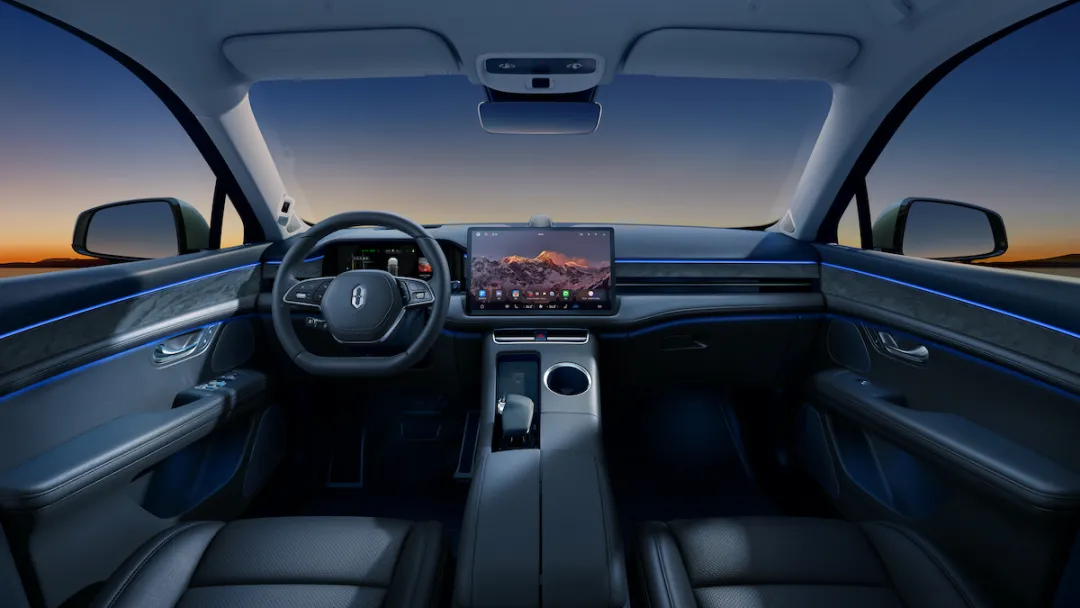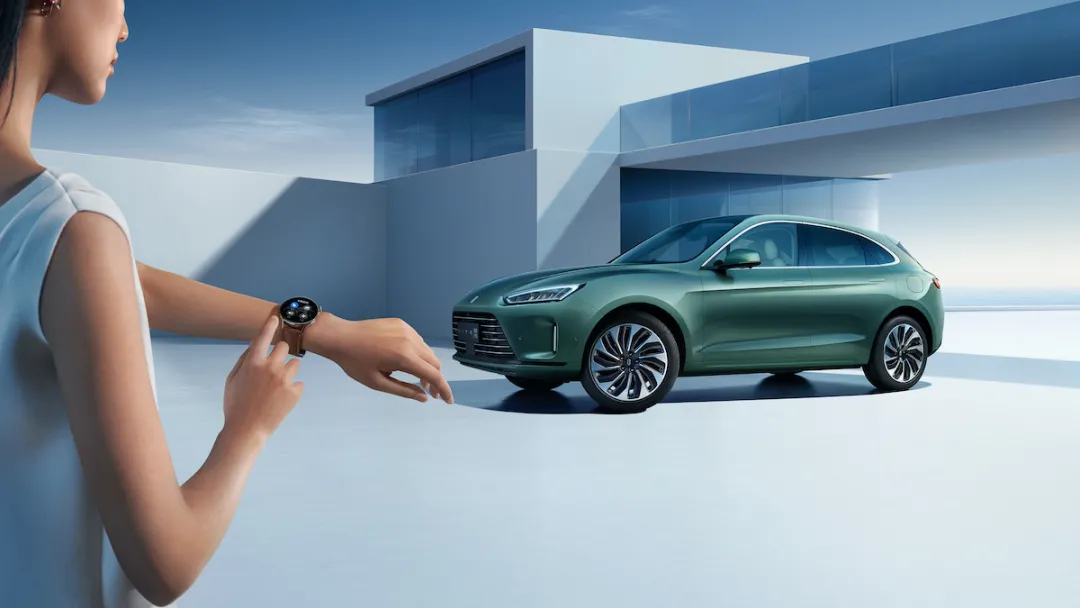Excerpt
Outing100, a media platform under Outing100 Group, focuses on the evolution of the automobile transportation industry chain. In an article titled “Huawei Executive’s Battle Against Tesla and Porsche,” author Zhou Changxian recounts how Huawei’s Consumer BG CEO and Intelligent Automotive Solutions (IAS) BU CEO, Richard Yu or Yu Chengdong, launched a new car brand called “AITO” and unveiled its first car model “AITO M5” in a recent Huawei new product launch conference. The author further describes how Yu boldly compared the car model’s capabilities with high-end luxury cars such as Tesla and Porsche.
Article
At an event on December 23, Huawei Consumer BG CEO and IAS BU CEO Richard Yu, also known as “Big Mouth” for his frankness and confidence, announced the launch of AITO, a new car brand, and the release of its first car model, AITO M5, after introducing the P50 Pocket. In the event, Yu compared AITO M5’s capabilities to high-end luxury cars like Tesla and Porsche, causing a sensation in the automobile industry.
Compared to other car brand names such as “GAC” or “BYD,” which don’t convey any philosophical meaning, “AITO” is a great brand name as it contains three meanings: boundary, world, and realm. “Boundary” refers to the relationship between Huawei and car manufacturers, which responds to the question of whether Huawei will enter the automobile market. “World” refers to car manufacturers entering Huawei’s “smart” world with either their soul, such as the “Huawei inside” feature, or their body, such as the integration of Huawei’s intelligent network connectivity components. Finally, “realm” refers to Huawei’s brand vision and strategic vision.
Regarding the AITO M5, Yu incorporated Huawei’s industrial design, engineering, software, and HarmonyOS ecosystem advantage. This was a sharp contrast to Huawei’s first car brand collaboration with Seres, where Yu was not satisfied with the Seres SF5’s chassis being too soft.The Huawei was deeply involved, or rather, led the entire product development process of this car, while its close partner Cygnet became a contract factory. During the launch event, no one from Cygnet went up on stage and the leaders in the audience didn’t even get a chance on the camera, which was quite different from the AITO brand launch event Cygnet led not long ago, where Huawei was a central spotlight.
It’s worth mentioning that the WEY Jie M5 is the first new energy vehicle equipped with the latest HarmonyOS smart cockpit. Why do we say “first” for this car? At last month’s Guangzhou Auto Show, the Alpha Fox HUAWEI version claimed to be the first, but apparently, Huawei stopped using that claim.
Regarding the WEY Jie M5, Yu Chengdong clearly had high expectations; “We demand the team to use the standards of a million-dollar luxury car, including the exterior, interior, performance, experience, and quality requirements of a million-dollar luxury car, to create this car.”
Regardless of whether the Huawei team has achieved this goal or not, he said they did. From the dimensions of power, performance, aerodynamics, energy efficiency, endurance, space, NVH experience, and other factors, he compared the WEY Jie M5 to a wide range of million-dollar luxury car brands and outdone them.
While praising the HUAWEI DriveONE pure electric drive system platform integrated into the WEY Jie M5, Yu Chengdong suddenly launched into criticism of three-cylinder engines, “Three-cylinder engines are asymmetrical and produce high vibrations, so we need to have at least four cylinders.” He could almost have been speaking on behalf of the ID. One.
At this point, some of the automotive journalists in the audience couldn’t take it anymore and started mocking him in their social media groups. Some even left early.
In fact, these lovely media colleagues need not be so bothered; Huawei is not LeTV, and Yu Chengdong is not Jia Yueting. He does have a few tricks up his sleeve, so why not listen carefully first?
After the launch event, I had a chance to see the WEY Jie M5 up close. Compared to most competing products, the HarmonyOS smart cockpit really impressed me.
Firstly, the 15.6-inch 2K HDR smart central control screen was easy to operate and smooth. The Smart Dock service card on the desktop’s lower side can be adjusted according to personal preferences and will recommend content, safety reminders, and convenience services based on comprehensive analysis of traffic, owner status, and vehicle condition.
When Xiaoyi is awakened, she suggests switching to internal circulation mode when entering tunnels or when the air quality outside the car is poor. When the car’s fuel or power is low, Xiaoyi suggests nearby gas/charging stations and asks if navigation guidance is required. When the car is almost home, Xiaoyi reminds the driver if there are any packages left to be picked up and provides pickup codes.HarmonyOS Smart Cockpit has built rich window display forms such as full screen, split screen and floating window, to meet the interactive needs in different scenarios.

Secondly, it has more convenient interconnection capabilities, realizing the interconnection between car and vehicle, car and watch, car and home, making the car no longer an isolated island.
When logging into the same Huawei account on the phone and car system, with the support of HarmonyOS distributed technology, services such as navigation, music, video, and connectivity can be seamlessly switched between the phone and car system.
At the same time, this car also has the Carlog function, which supports CMS cameras and driving cameras switching through smooth video connectivity, allowing real-time shooting of the outdoor scenery and one-button sharing to Huawei phones.
To be honest, similar descriptions can be seen in the product descriptions of other brands, but some have not been implemented, and some have been implemented but faced issues.

AITO WENJIE M5 has another trump card, which is the industry’s first car model that can be unlocked without using a watch. Users can use HUAWEI WATCH 3 to unlock the vehicle through Bluetooth or NFC, and can also view vehicle information, switch modes, lock the car, open and close the windows, and locate the car through the car owner APP on their phone or watch.
Regrettably, Yu Chengdong did not showcase Huawei’s capabilities in autonomous driving, which may be related to the fact that AITO WENJIE M5 only has an L2+ level of assisted driving function.
At the end of the press conference, Yu Chengdong announced:
Starting from December 23, the real car display will be gradually launched in 180 Huawei stores in 42 cities. From January 20, 2022, test drives and reservations will be available in 500 Huawei stores in 118 cities. Users can make appointments through the AITO official website and My Huawei APP.
It is true that you should always be prepared.
According to AITO brand’s plan, after AITO WENJIE M5, a large luxury SUV and a medium-sized luxury pure electric SUV will be launched in the future. Don’t forget AITO’s ambition of becoming one of the top three new energy vehicle brands in the world within five years.
Let alone whether it is a boast, without Huawei’s empowerment, there might not even be room for boasting.
In summary:From last night until now, I have read many articles from my media colleagues about this press conference. Some were serious, some were humorous, some were positive, some were negative, but most of them focused on the AITO WENJIE M5 car. Some even said that Huawei had “slapped its own face” with this conference – is Huawei now a car manufacturer?
Actually, it’s more accurate to say that this is a promotion event for Huawei’s HarmonyOS intelligent cockpit and related technologies and products, which fully embodies Huawei’s strategic objective of “not making cars, but focusing on ICT technology to help car manufacturers build better cars” and to be an intelligent connected vehicle parts supplier.
For example, the P50 Pocket’s full-scenario smart card service. Yu Chengdong revealed that brands such as BMW, SAIC MG, BYD, and others will also apply its Bluetooth / NFC smart key function in addition to AITO.
Another example is the 7kW intelligent home charging pile, which was released designed by Yu Chengdong himself – compact and lightweight (less than 400g) – and has great potential in the industry.
It can intelligently recognize car owners, charge automatically after insertion, and achieve remote control and management through 4G and Bluetooth connections. It also supports OTA upgrades, scheduled authorization anti-theft charging, remote fault diagnosis, and other functions. Even more impressive is that it can formulate an economical charging plan based on peak and valley electricity pricing.
It is said that Huawei invited 500 automotive media people to this winter launch event, including those from finance, technology, and product lines, which is unprecedented. The number of people in the automotive industry watching this conference on screens large and small is incalculable.
A friend commented that the intelligent cockpit is great, but the car is a bit ugly. Another car company that was also empowered by Huawei said that many colleagues are watching. That’s either classmates or potential customers. In other words, Yu Chengdong’s effort can be said to have achieved two goals.
This article is a translation by ChatGPT of a Chinese report from 42HOW. If you have any questions about it, please email bd@42how.com.